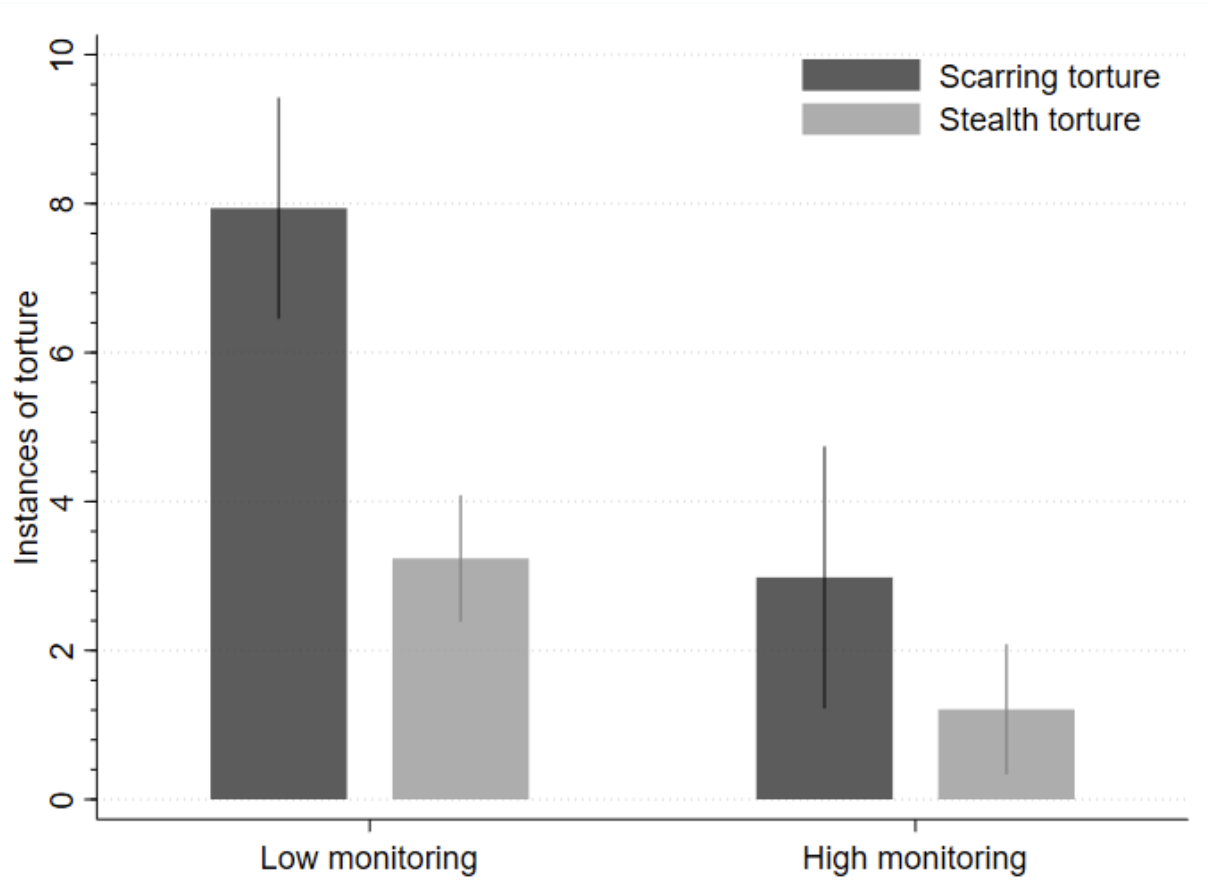Promoting human rights is a daunting task. Recent events show how quickly governments and non-state actors violate them. Against this violence, human rights organizations and journalists play a crucial role in preventing abuse. Unfortunately, there has been growing skepticism about their effectiveness. In particular, one of the main tools of advocates, shaming campaigns, does not seem to be as effective as we had hoped. In an upcoming article, I argue that shaming is a necessary—and effective—part of an advocate’s toolbox. But there is a catch.
Shaming campaigns start in response to abuse and seek to impose material and reputational costs on the perpetrators. The hope was that if human rights advocates could raise these costs high enough, abusive countries would start to respect human rights. But many have grown skeptical. Years ago, Aryeh Neier, co-founder of Human Rights Watch, wrote about the underwhelming results of shaming. Two years later, Marc Limon observed that sometimes shaming has even made things worse. Some academics have reached similar conclusions. They often find that, at best, shaming only helps under specific conditions. Given NGOs’ limited resources, could their efforts be better directed elsewhere?
The disillusionment with shaming, I argue, should be tempered. It is true that perpetrators rarely stop ongoing abuse in response to these types of campaigns. However, this unfortunate reality should not push us to conclude that the efforts of advocates are ineffective. The benefit of shaming is not just to stop ongoing abuse. It is also to prevent it from ever starting. When taking stock of shaming, the question is not only if it can make perpetrators stop. We should also ask how many more new human rights violations there would be if the threat of shaming were absent.
Take the Zapatista rebellion of 1994 as an example. The Zapatistas were a small Mexican guerilla group fighting for the political inclusion of indigenous people. Soon after they took up arms, the Mexican dictatorship had them beat. The army had the Zapatistas surrounded, and many expected violent reprisals to follow. Instead, the government chose to negotiate. The reason was not that the Mexican government was committed to human rights; it had a long history of repressing organized dissent. Instead, it chose restraint because it knew that the world was watching. The Zapatistas had captured the attention of journalists and advocates across the globe. The government concluded that the public opprobrium its repression would have caused was not worth it. It chose restraint because of the threat of shaming.
This example underscores the importance of taking the deterrence effect of shaming seriously. Critics miss a large part of the story if they focus only on how shaming fails to stop ongoing abuse. For every one of those cases, there may be others where abuse never occurred in the first place because of the possibility of shaming. Observers of these latter cases would see respect for human rights and minimal shaming and might assume that shaming was unnecessary to protect human rights. However, in reality, it is the potential of facing public condemnation—the threat of shaming—that saves these countries from repression.
One way to quantify the threat of shaming is by focusing on human rights monitoring. I use the term monitoring to refer to the amount of human rights information available and the infrastructure that produces it. Monitoring is a precursor of shaming. Advocates use it to detect violations and build their cases against the targets of shaming. In essence, monitoring puts potential perpetrators on notice. They know that shaming is more likely when a robust network of advocates and journalists are documenting abuses in their countries. Consequently, we can examine the impact of the threat of shaming by focusing on observed monitoring levels.
My study shows that once analyses move their focus to monitoring, it is easy to see the positive impact of human rights advocacy. I document levels of monitoring worldwide from 1976 to 2017. The results are encouraging. I find that, just like with Mexico and the Zapatistas, monitoring reduces physical integrity violations. My investigation shows that many countries have reduced their chance of experiencing new abuses by 30% due to monitoring. Moreover, about 85% of countries saw statistically significant improvements as monitoring intensified. Likewise, I find that torture is less common when monitoring is high. The graph below shows the impact of monitoring on scaring torture and stealth torture (torture designed to go undetected). In both cases, there is a drop of about 60% when going from the 5th to the 95th percentile of monitoring.

In contrast, like others, I find that actual instances of shaming have no impact on human rights. Again, this result does not indicate that shaming is counterproductive. Instead, it tells us that once the threat of shaming is established, carrying it out will have little impact. Perpetrators repress knowing they will face criticism. It is not surprising that they do not change their behavior once that criticism finally comes.
The lesson here is not that advocates should prioritize monitoring over shaming—monitoring is effective because it communicates the threat of shaming. If shaming were costless for perpetrators, then monitoring would have no teeth. Both strategies are an integral part of human rights advocacy. Ultimately, the rights community must study how potential perpetrators react to the threat of shaming, not just actual shaming. Once we do, it is easy to see that human rights advocacy works.
Admittedly, there is no silver bullet to stop all abuse. Some countries seem impervious to the efforts of advocates. Yet advocates shame these countries not only to get them to stop abuse but also to prevent others from following in their footsteps. By this metric, shaming is successful and should remain a part of human rights advocacy.

